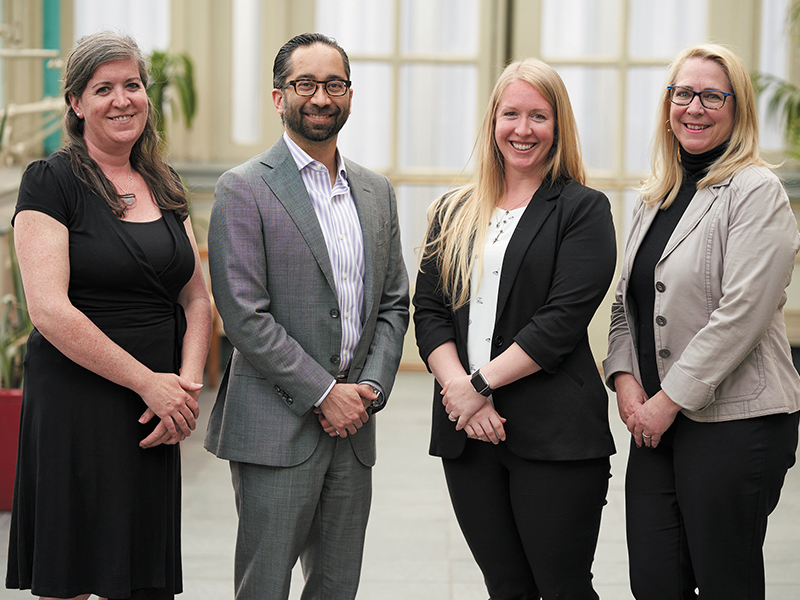
In a panel discussion during Benefits Canada‘s 2022 DC Plan Summit, three defined contribution pension plan sponsors shared how their plans are evolving to ensure retirement savings are flexible, maximize employee engagement and cater to members’ divergent financial needs.
During the coronavirus pandemic, Niagara Casinos laid off 96 per cent of employees and its casinos were closed for more than 17 months. “They had no retirement savings coming in during those two years,” said Kate Interisano, the organization’s compensation and benefits manager. “So we’ve really had to refocus and relook at our plan and what our standard communication strategies have been.”
Employees are auto-enrolled in a DC plan with a four per cent base contribution, three per cent employee contribution and a three per cent employer match. While Niagara Casinos hasn’t changed its DC plan design, noted Interisano, it has shifted its focus on retirement savings to its group tax-free savings account, which was introduced five years ago to help employees with emergency savings.
Read: Niagara Casinos gambles with innovative pension communications
“It was very concerning throughout the pandemic when employees were reaching out saying, ‘Oh, I have $100,000 in my pension plan. I’m going through some financial hardship. I need to access that money.’ It’s that communication with them, that re-education of, ‘That’s your money for retirement, here’s some other options that we have to provide some short-term savings solutions in the TFSA while still continuing with your basic contributions to the pension plan to continue your long-term savings goals as well.’”
Foresters Financial’s DC plan has a mandatory three per cent employee contribution that’s fully matched by the employer, as well as a voluntary four per cent employee contribution that’s also fully matched. In 2021, it added a group registered retirement savings plan and a group TFSA. While the mandatory three per cent has to go into the DC plan, staff can put the voluntary contributions into either the DC plan, the RRSP or the TFSA. And all employer matches go into the DC plan.
In year one, about 25 per cent of staff put money into the TFSA or the RRSP, said Ken Adams, the company’s vice-president of total rewards, noting the organization is recognizing everyone has different savings needs.
At Domtar Corp., all salaried employees are auto-enrolled in a DC plan, which has a four per cent employee base contribution and a four per cent employer match. For voluntary contributions, the employer matches up to four per cent. Domtar also offers a group RRSP and TFSA. “The group RRSP is very popular because people can transfer a portion of their bonus payout to the group RRSP, so that’s super efficient and people enjoy it,” said Josee Turgeon, the organization’s vice-president of total rewards and human resources.
The organization is also investing a lot in education and communications — including visiting all the mills to conduct in-person sessions — and is aiming to focus on decumulation and ESG investment options. Niagara Casinos is also looking into in-plan decumulation options, said Interisano, noting 40 per cent of employees are at or near retirement age.
And Foresters Financial is looking at integrating DEI into its retirement savings plans. In particular, 55 per cent of employees are female and about seven per cent go on maternity leave each year, said Adams, noting the organization initially provided a three per cent base contribution for any employee on maternity or parental leave. “We decided to up that to the maximum amount, the full seven per cent even if the employee wasn’t contributing the full seven per cent right off the bat. We recognized every buck counts — whatever we can do, even if it’s a small incremental step, it’s an important one.”
Looking ahead, Interisano highlighted the current jobseekers market, noting the importance of educating new and potential staff about Niagara Casinos’ total rewards offering, including the pension plan. “For us, I think definitely looking at our plan design [to] potentially see if we can financially increase our contributions to make us an even more desired employer. That’s going to be a big impact for us in terms of the future of our plan and the future of our workforce.”
Read: Editorial: Modern pension plan design isn’t black and white
Flexibility will be a big trend going forward, said Adams, citing the various financial responsibilities facing all employees. “Thinking beyond a structured DC plan to a more holistic package of vehicles that [provides] flexibility to draw on the money at different points in time for different reasons without all the restrictions that people have today is going to be really important as we get further and further into the future, as life gets more complicated and expensive.”
Turgeon agreed, noting the importance of flexibility in how plan members can use their savings and referring to the federal government’s new tax-free first home savings account. “The younger workforce would prefer to have money put in [that] new vehicle and we could match there, so I definitely also see more flexibility in the offerings for our employees and the long-term financial well-being of the employee, not just retirement. It’s much broader.”
